#canard aircraft
Text
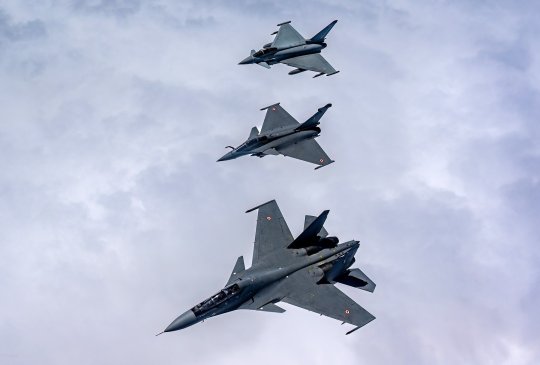
"Canard Club"
Front to back: Indian Air Force Sukhoi Su-30 and Dassault Rafale with an RAF Eurofighter Typhoon
#Combat aircraft#Military aviation#Jet#airplane#canards#Sukhoi#Su-30#Dassault#Rafale#Eurofighter#Typhoon#Fighter jets#Formation
45 notes
·
View notes
Video
youtube
Experimental aircraft: canards of war, aviation Oddities, and engineering marvels
#youtube#canards#aviation#aircraft#history#experimental#dronescapes#ww2#ww2 history#ww2 germany#ww2 aircraft#wwii#wwii era#wwii history#documentary#engineering#research
9 notes
·
View notes
Text

Oh. I guess I forgot to post the finished shirts I made for the Rutan Canard Fly In.
We did the timed air event and came in fifth place. We came in at 216 MPH. We took the turns super wide because we weren't familiar with the course and we didn't push too hard because cylinders 5 and 6 were coming in a tiny bit hotter than we wanted. Now that we know what we are doing, next year we'll come in even faster. We're hoping to join the 220 MPH club. 💕
#pilot#ballast#canard#rutan#homebuilt aircraft#aircraft#graphic designer#graphic design#not ai art#not ai generated#art#artist
0 notes
Text

The Grumman X-29 Experimental Aircraft

The Grumman X-29 was an experimental aircraft developed by the United States in the 1980s, aimed at testing advanced aviation technologies. One of its most unique features was its forward-swept wings, which improved maneuverability and reduced drag. However, this design introduced significant aerodynamic challenges, such as the tendency of the wings to twist under stress. To address this, the X-29 utilized advanced composite materials, which provided the necessary strength without adding excess weight.

The X-29 was inherently unstable due to its forward-swept wings, necessitating a sophisticated digital fly-by-wire control system. This system allowed a computer to continuously make adjustments to keep the aircraft stable during flight. Additionally, the aircraft featured canard control surfaces, located in front of the main wings, which enhanced control and maneuverability, particularly at high angles of attack.

Another key feature of the X-29 was its variable-geometry engine inlets, designed to optimize airflow into the engine across different flight conditions. This design allowed the aircraft to maintain efficiency at various speeds and altitudes. Together, these innovative design elements made the X-29 a complex and advanced aircraft for its time.

The X-29 first flew on December 14, 1984, under the management of NASA and the United States Air Force. Two X-29 aircraft were constructed, and they accumulated over 400 test flights. These tests focused on exploring the aircraft's unique aerodynamic and flight control characteristics, providing valuable data on how forward-swept wings performed under various conditions.

The primary objective of the X-29 program was to investigate technologies that could be used in future fighter aircraft, with a particular focus on improving maneuverability and control at high angles of attack. Although the X-29 was never intended to enter production, the insights gained from its development contributed to future advancements in aircraft design.

While the X-29 did not see operational service, its legacy is significant. The technologies it explored, including forward-swept wings, composite materials, and digital flight controls, paved the way for innovations in fighter aircraft. Today, the X-29 is remembered as an important milestone in the study of unconventional aircraft designs and aerodynamics.

An interesting and lesser-known fact about the Grumman X-29 is that, despite its radical design, the aircraft reused components from existing fighter jets to save on development costs. Specifically, the fuselage of the X-29 was derived from the Northrop F-5A Freedom Fighter, and its landing gear was taken from the General Dynamics F-16 Fighting Falcon. This blending of cutting-edge technology with proven components from earlier aircraft helped keep the project within a more manageable budget, demonstrating a creative approach to experimental aircraft design during that era.
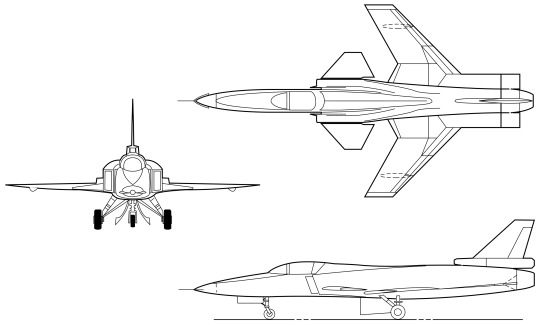
#responsive thoughts#aircraft#flight#experimental aircraft#x-series#military#jet fighter#x-29#forward swept wing
76 notes
·
View notes
Text




Grumman X-29 an American experimental aircraft that tested a forward-swept wing, canard control surfaces, and other novel aircraft technologies.
90 notes
·
View notes
Text

Saab Gripens delta wing and canard configuration with relaxed stabilitydesign and fly-by-wire flight controls. Later aircraft are fully NATO interoperable. As of 2020, more than 271 Gripens of all models, A–F, have been delivered.
@CcibChris via X
23 notes
·
View notes
Text
…. Oops I’m back with a whole second post/probably soon to be thread because the windglider one was getting very long and now I’m talking about Tengus and Gliders together. Putting in a read more for length.
This post is in response to reblog from @canonical-transformation and asks from @followfire and @beingatoaster



Chapter 1) How the hell does a Tengu Work?
ok that might seem like a strange place to start but I think it’s important to start off with the fact that Tengu wing anatomy is wack as hell. Typically I am the sort of person who likes to do research while thinking about my silly silly headcanons. I have learned a lot about old fabric skinned aircraft and have an appreciation for early heavier than air gliders now because of the (Wikipedia) research I’ve done to think about gliders in genshin. So I figured we’ll look up animals with 4 wings and figure out how they would fly and okay yup, early birds and flying insects. Do any of them have shorter front wings and larger back wings? No? No they are all either larger front or equal size? Excellent. Sounds great. It does seem to be a design feature used in certain types of military jets and missiles to uh… help with turning? I don’t 100% know. It’s called Canard configuration. It’s specifically for fixed wing aircraft and not… birds….
ok so I don’t actually know the motion a tengu’s wings would probably be making. It’s not like we ever get to see them fly in game. Hell, we barely get to see Sara’s wings because the game magically puts them away so they don’t have to animate them except in her idle. This is stupid and we are going to pretend she can’t put her wings away in her inventory and simply just keeps them folded a majority of the time. Anyways enough about Sara for now (don’t worry man. We’ll be back), it’s time for assumption #1: tengus fly in a mostly horizontal position and flap their wings in a rhythm similar to dragonflies (front and back set flap with off timing), but with more elbow in it like a bird. There is a flapping motion, the wings work independently of one another, and a tengu can not hover or fly backwards.
Assumption 2: the larger bottom set is likely responsible for most of the lift. The smaller top set is likely responsible for steering? Especially sharper turns and maneuvers? I don’t 100% know. I really feel like they should be reversed so I can take inspiration from proto-birds like micro raptor but instead we have that. So we are going to work with it.
assumption 3: the human form isn’t really meant to sustain flight? But we know they can fly, and it’s described as flight and not as gliding in lore, and thus they must be able to, for some amount of time, generate enough lift to gain elevation. In order to help reach that goal, a few other things I presume about tengus are that they have extra musculature in and around their wings to support them, they have bones that are more hollow than the average human, both to reduce weight and to store oxygen so that anaerobic metabolism is delayed and thus lactic acid production, allowing tengus to perform athletic feats for longer without exhaustion than an equivalent human, and that their builds tend towards lean and muscular without excessive weight. Sara is a decent example of a tengu build I think! Sort of lanky and isn’t muscular like Itto, where it’s very obvious, but she is muscular and very strong.
those assumptions are going to form the backbone of what a theoretical prosthetic glider may need to accomplish. It needs to be able to move independently from the other wing on the same side, and flap! Either to provide lift or to help steer. Now, let’s get onto
Chapter 2: Construction of a Second Wing.
I say as if there would be one construction. Because. You know. It’s a mobility aid. There would be varying levels of need and thus varying types made so let’s go through them in rough order of least involved to most involved. Anyways I’m still not an engineer so uh fuck.
but first we have to start with the common elements. While I tend to think normal gliders for people without wings are unframed devices, I firmly believe that tengu wing prosthetics (which I’m going to call second wings I guess. I made up that name for the chapter title but do like it) are articulated framed constructions. Realistically I think bamboo would grow in Inazuma despite it not being there in game because trees can’t appear in two regions if they don’t have fruit, but, I think bamboo frames are the most common material due to its lightness.
I was originally going to draw pictures depicting the framing but it’s too late and I’m comfy cozy in bed, because past midnight is the only time I write insanely long tumblr posts. Diagrams may be added later but please use your imagination for now.
ideally I think the frame would follow the leading edge of the wing, acting almost as a second skeleton in order to minimize motions the wing is incapable of, and to provide a way to attach these things to the body harness. Realistically a frame on just one side of the wing may be impractical, and if that is the case then the wing is probably fully surrounded by a light bamboo frame. This probably depends on the needs of the user.
My general thought on the design of these would be a wing by wing approach. The trailing edge of the wings are not sewn close all the way, allowing the user to slide their wing in from the bottom before closing it with snaps, buttons, knots, etc. The wing would then be connected at the… shoulder I guess? The back? By an attachment to a harness. This prevents the wing cover from loosening or moving mid flight and secures the wooden framing against the skeletal structure. The idea would then be that a user could flap their wing normally, but with a larger impact than their wing could usually provide. The wing by wing nature of this general design allows for users to only have 1/4 wings be a second wing, or as many as they need in whichever combo. A more permanent harness attachment would likely be used in those who need both wings in a pair or both pairs, though the single wing approach may also be more practical for those with mobility issues in their wings. Basically, if the problem is lift generation, you can retrofit a wing over top and have a new wing!
User cases: those with problems to wing shape (caused by injury or congenital) that hampers flight potential. Tengu with any other problem that does not limit range of motion below what one would typically need to fly with.
See chapter 3 for more detail, because I do have a reason why this is the version I have thought about the most.
But speaking of those with mobility problems. What about people who can’t move their wings to the extent needed to fly typically. This is a much harder problem to solve with a second wing obviously, but I have had a few thoughts. To begin, these ones are definitely probably closer in framing to a full frame, because the frame will likely have to act as a brace. This is also the time to tell you I’m not a physical therapist. Anyways I don’t know how to solve this problem but there are a few options
A) the glider acts more like a brace and solid wing. The tengu’s wing(s) is still inside but does not bend, and is likely supported by more internal straps to fasten their wings tighter to the bamboo framing . This likely limits the ability to fly as flapping would not be an option. Though in individuals with upper wing injuries that limit mobility, I really do thing external control with strings controlled by arms or other body parts may be an option for sharp steering that is hard to do by body position alone.
B) Single wing injuries may be able to have rigging of some sort to have the motion of the opposite wing move the injured wing. This would likely be better if the injured wing was tucked away somewhere else and a new wooden boned wing was created.
use cases: those with atrophied ring muscles (though they may be able to move to previous one over time. Those with injuries limiting range of motion.
The last category is for those missing parts of or entire wings. These prosthetics would be the most intense, and would involve not only rigging wings to be able to flap and move via strings or whatever but also a different attachment system custom made to the user’s body. This… I don’t have enough engineering knowledge to imagine this I’m gonna be honest.
Chapter 3: hey why have you even thought about this and how does it pertain to characters (you can stop I’m just oc rambling. But also Kujou Sara)
So I’m gonna be honest and say I have a genshin OC who is a tengu. She is learning to make second wings because her nephew (who is like her little brother!) is a half tengu, and thus his wings are too small and aren’t growing primary feathers at quite the rate to support flight. She thinks that flight is one of the essential qualities that makes a tengu a tengu and not just a human with wings. She thinks he should get to be a tengu, and is thus making prosthetics from scratch even though she is very much not educated to do so.
This would eventually also lead her to talking with Kujou Sara. Thinking about Kujou Sara is a large part of why I have the oc, and also why I basically made her to be a foil to Sara. I don’t think Sara can fly, due to combination atrophy from not using them since I doubt Takayuki would let her go flying really, and injury (from falling off a mountain and whatever else she may have accumulated). Now. I don’t think Sara would like the concept of a mobility aid but also, like, I think it would be good for her to get her feet off the ground and to not have anything bad happen. Kujou Sara should have nice things and maybe one of those things can be talking to someone more immersed in the culture you are disconnected from and discovering things about it. And getting a second opinion on the things that mark you as obviously non human despite your effort to be one.
Anyways make your ocs to explore all the things in a game the game won’t cover, such as: long term ramifications of that war they just had, Yokai culture and self identification of the label, Kujou Sara having screen time and development and even some good things happening to her, Tengu, and wind gliders.
anyways that’s it for tonight my brain is starting to melt. Maybe more if I can think of more later.
#my post#genshin impact#wind glider#Oc tag#Which I will dangerously apply despite never talking about this oc and this post having a high likelihood of getting notes#Maybe I’ll make a reblog to this where I just talk about her.#Yes the way too late brain isn’t 100% sure I remember her name which is why she isn’t getting tagged
19 notes
·
View notes
Text
Conspiracy goggles on? Check!
Curious that the name "Tommy" comes from Thomas which means
"twin", "alike-looking man"
Interesting to bring back this man into an episode which was all about jealousy, focused on the things that Eddie and Tommy have in common... And was pretty clearly titled after the song Bewitched, bothered and bewildered - and the lyrics mention "an imposter".
His last name "Kinard" is also interesting but feels harder to unpack so I won't really dive into that. Can't find a clear consensus on the origin/meaning of the name, but one suggestion was "high place", which is funny to me whenever I think about Tommy telling Buck that he'll take him "up" if Buck wants to.
(I'm cracking up here btw. So dramatic of Buck to moan that it's been hard to get Tommy's attention when through the episode Tommy is repeatedly like "So... Do you wanna..."fly" 😏?)
Anyway, back to Kinard. Curious, how google keeps suggesting the result "canard" as the word is so similar.
Canard has several meanings but "fake story" is one, and his first appearance on the show showed him acting straight - but had a scene which suggested he might be "Team Jacob". Canard is also an aircraft - he's a pilot. And a duck... Maybe as in "If it looks like a duck, walks like a duck and quacks like a duck, then it just may be a duck"?
So my unhinged conspiracy goggles are telling me that this theme about being false, or an imposter relates to him and Buck. On the same episode they had an emergency about face blindness, and that resulted in a loved one's tragic demise. Hurting someone you love without realising it because you were just so confused and made the wrong choice.
Btw on a tangent!!! The fact that all these intensely queer scenes keep happening in kitchens rather reminds me of Eddie's breakup, in his kitchen. Ana did not want to leave him to deal with a disaster in his kitchen but finally came to the conclusion that fine. It's a mess, but it's your mess now.
(Btw WHAT is this Tommy/Buck ship name, I'm getting desperate. Tagged it Rudolph Air after Buck/deers/reindeers and flying. Help me out 😂)
#911 abc#911 speculation#911 buddie#911 spoilers#eddie diaz#evan buckley#buddie 911#evan buck buckley#911 on abc#eddie díaz#kitchen scene#buck bothered and bewildered#tommy kinard#bi buck#buck tommy#Rudolph Air
33 notes
·
View notes
Text

Rockwell XFV-12A

Rockwell XFV-12A
by Alex Stoll

Around 1970 the Navy could not see how it was going to be able to replace its old Essex and Midway carriers with Nimitz-class supercarriers. Admiral Elmo Zumwalt directed a study of alternatives which resulted in the Sea Control Ship (SCS), a mini-carrier equipped with V/STOL fighters and ASW aircraft. The USN invited manufactures to propose demonstration programs for a new aircraft, called the V/STOL Fighter Technology Prototype, to replace the outdated Harrier and serve on the SCS or other ships much smaller than conventional carriers: BAe and MD proposed an improved Harrier and a supersonic Harrier with a PCB (Plenum-Chamber Burning) engine; Boeing and Northrop proposed jet-powered tail-sitters; Lockheed-California proposed a propeller-driven tail-sitter; and Rockwell proposed a canard-delta aircraft powered by a large and enormously powerful engine that used the ejector-lift system for V/STOL. The Navy awarded the contract to Rockwell in 1972, instead of choosing designs based on proved technology, and the XFV-12A designation (twelth in the V series, not in the F series; the F-12 was the interceptor verison of the Blackbird) was allotted. Even though the forward fuselage and landing gear of the A-4 and the wing box, air intakes, and fuel tanks of the F-4 were used to speed the program up, it still ran far behind schedule. The prototype was rolled out in December 1976 and the first flight was scheduled for 1979.
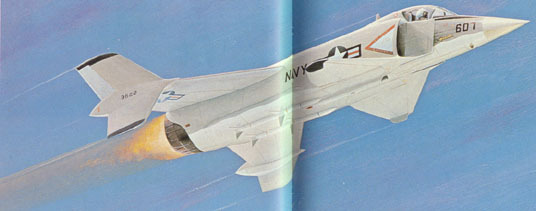
Engine Configuration
For takeoff and landing, the entire engine was ducted to hollow-section "ejector flaps" (also called augmentor flaps) out along the wings and the canard by pilot command via a diverter valve box. The high-energy hot gas forced fresh air from above through the ejector flaps at a ratio of 7.5:1 to boost thrust by 70 percent. The ejector flaps could be raised or lowered to provide a smooth transition from vertical to horizontal flight or vice versa. After the XFV-12A's cancellation, de Havilland Canada designed an aircraft with ejectors build into the roots of a delta wing. GD incorporated their concept into the E-7, a F-16-based delta-winged STOVL aircraft. DHC built a large powered model and tested it in 1987. The EL system was large and control was difficult as a result of the large air mass moving through the wing root during transition, and nothing came of it (though not because the EL couldn't produce enough thrust as in the XFV-12A's case) despite the attractive low exhaust velocity.

Cancellation
Rockwell and Pratt & Whitney experienced several major technical problems, and the thrust boost from the ejector flap system was never as large in the full-scale aircraft as predicted from data collected by test rigs and sub-scale models; the XFV-12A could not leave the ground. Eventually funding dried up, the SCS was canceled, and the program proved a disappointment; however, in most future ASTOVL programs, large-scale powered models were used because of the experience gained in the XFV-12A program.

123 notes
·
View notes
Text
In order:










70 notes
·
View notes
Text
Northrop/McDonnell-Douglas NATF-23, the Navalized Advanced Tactical Fighter version of the YF-23
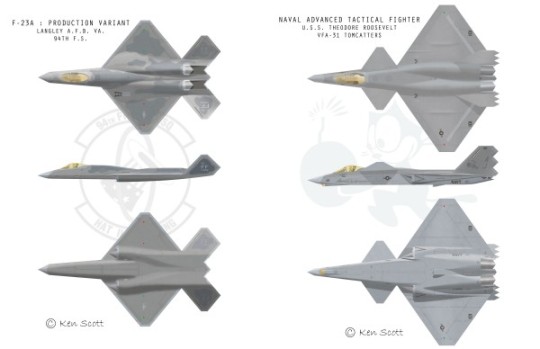
"A proposed naval variant of the YF-23 known as the NATF-23 was considered as an F-14 Tomcat replacement. The original YF-23 design was first considered but would have had issues with flight deck space handling, storage, landing, and catapult launching reasons requiring a different design."

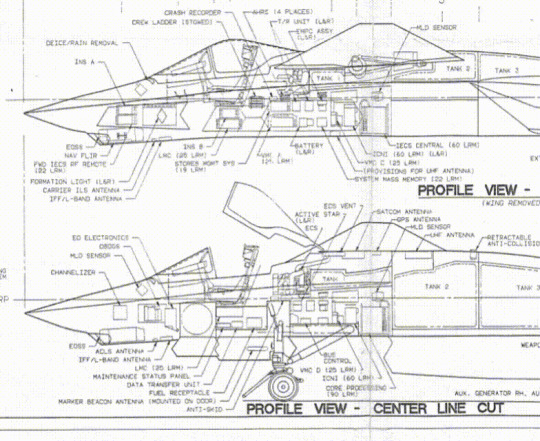

"The naval NATF-23 variant was different in many ways to the USAF version; the diamond wings were located as far back as possible, and the aircraft has conventional canted vertical tails instead of the ruddervator with serrations for low RCS and increased maneuverability at low speeds for aircraft carrier operations, folding wing capability for flight deck storage, reinforced landing gear, tailhook and canards for landing on aircraft carriers and thrust vectoring nozzles. The intakes were also different as they were a quarter circle with serrations, with a bumped compression surface. The NATF-23 had an increased 48 ft wingspan while the length was reduced to 62 ft."
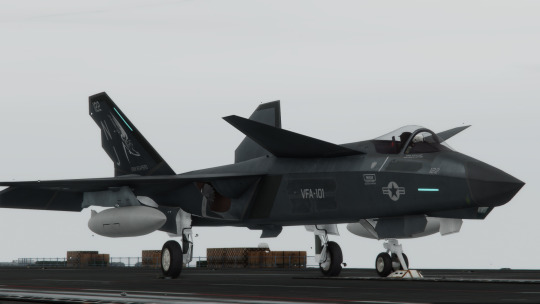
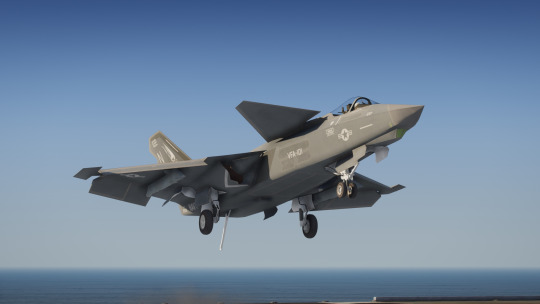
"The NATF program called for the procurement of 546 aircraft along with the USAF's planned procurement of 750 aircraft."

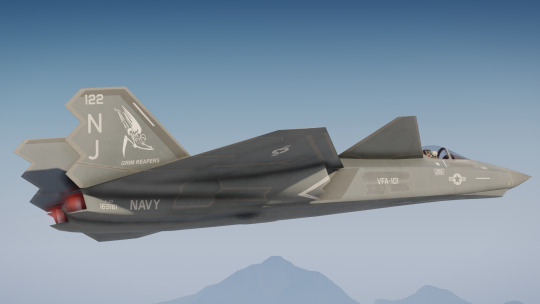
"The NATF's internal payload was 4AAAM/AMRAAM, 2 AIM-9, AND 500 RDS 20MM. No external load was mandated, but provision for external carriage of weapons was desired."
May 7, 1991 Testimony before the Senate Armed Services Committee.

"The Major Aircraft Review, launched in early 1990 under Secretary of Defense Richard Cheney, reduced the peak production rates of both the ATF and NATF, from 72 to 48 and from 48 to 36, respectively. This had the effect of substantially increasing the program cost. In August 1990, Admiral Richard Dunleavy, who was in charge of Navy aircraft requirements, stated that 'he did not see how the NATF could fit into any affordable plan for Navy aviation.' The ATF Dem/Val flight-testing was accomplished from August 1990 through January 1991, but this had little impact on the prospects for an NATF. In early 1991, consideration of the NATF was finally dropped after it was determined that the F-14 could meet the Navy's air superiority needs through 2015. There was, at least initially, an option to restart the NATF program in fiscal year 1997, although that has since been abandoned."
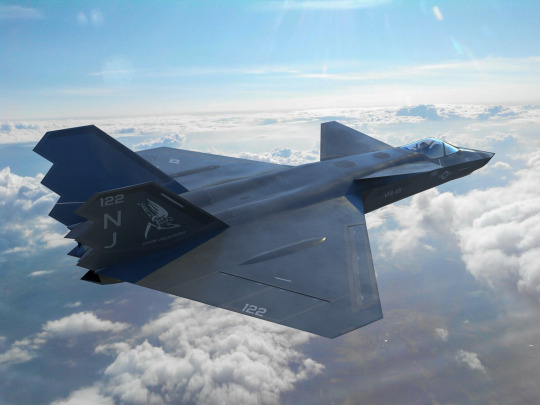
source, source, source, source
#Northrop NATF-23#NATF-23#Northrop YF-23#YF-23#F-23#Navalized Advanced Tactical Fighter#NATF#Advanced Tactical Fighter#AFT#fighter#United States Navy#U.S. Navy#US Navy#USN#Navy#cancelled#my post
44 notes
·
View notes
Text
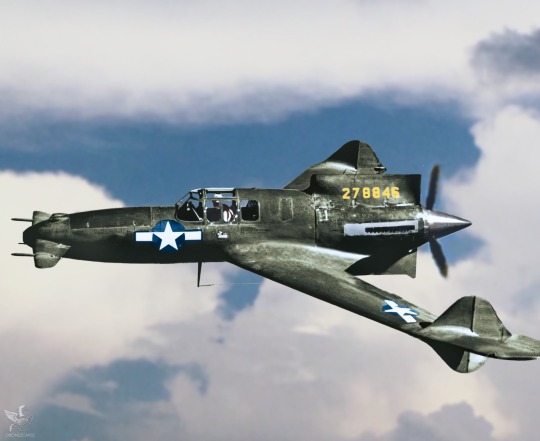
Curtiss XP-55 Ascender, prototype canard fighter aircraft. Circa 1943.
➤VIDEO: https://youtu.be/ChtEyx09ZIY
#Curtiss#experimental#prototype#X55#aircraft#airplane#aviation#military#documentary#aviation history#ww2#wwii#dronescapes#youtube#focke wulf#Focke Wulf F 19#XP-55 Ascender#ascender
368 notes
·
View notes
Text
Last year when they were rolling out the merch for the Kenab Rutan Canard Fly-in, they told us there was no interest in making black tshirts shirts so we made our own tshirts for the Fly-in this year. 😉
On the back panel illustration, I tried to do a modern take on the old national park posters. The background is the "timed air event" map for the event. Bottom is a sandstone formation in Utah called The Wave. The picture on the front of the shirt is a variation I made of one of Kenab City's event logos.
We took the designs in to a print shop to get made this morning. I'll post pictures of the shirts once we get them back.
* Ballast is the name of the weights used for weight distribution to help with the planes center of gravity.


#graphic design#graphic designer#not ai generated#not ai art#no ai art#no ai used#actual artist#non-ai artist#digital artist#digital art#canard#airplane#cozy aircraft#cozy airplane#aircraft#pilot#homebuilt aircraft#Rutan aircraft#artist#art#logo#utah#national park
1 note
·
View note
Text


The Grumman X-29 was an American experimental aircraft that tested a forward-swept wing, canard control surfaces, and other novel aircraft technologies.
(yes i fucked around and made an x-29 girl because it's a cool experimental aircraft !!!)
10 notes
·
View notes
Note
Could you give us some interesting info on swedish military aircraft?
OH BOY COULD I- there's a whole wealth of stuff I could talk about when it comes to Swedish military aviation during the Cold War, thanks to their will-they-won't-they flirtation with the western powers and, as a result, their almost entirely domestic manufacturing- while many Nordic countries tended to go with various NATO staples, the Swedes got weird and wonderful thanks to one company-
SAAB. Yeah, the car people. "Born from jets" isn't just a slogan, y'know.
While the SAAB Tunnan, Lansen, Draken, etc are all fascinating, I think my favorite of the bunch is this-

The SAAB 37 Viggen. (the AJ/AJS/JA/etc-37, depending on which variant you're talking about.)
The Viggen is a multirole aircraft, and one of the first ever produced in bulk with canards- that's the second set of "wings" ahead of the first. Interestingly, while most aircraft used canards to assist with slow-speed maneuvering, perhaps most famously on members of the Flanker family of combat aircraft- such as the SU-33-

the Viggen's canards are actually a second set of lifting bodies to assist its short takeoff and landing capabilities. This makes the Viggen, quite literally, a supersonic biplane!
Meant to go extremely fast, extremely low, the Viggen was used for reconnaissance, interdiction, naval strikes, you name it- though never in any shooting war, which is probably for the best, as any shooting war Sweden was likely to be involved in would have been... bad, given it would have likely been WW3. To this end, it was equipped with terrain mapping radar, a pretty high-tech flight computer (for the time,) and a lot of steering aides, as flying low and fast in the Baltic usually meant dealing with fog, snow, and all manner of low-visibility nonsense. I remember an anecdote a friend once told me of a Viggen pilot flying a recon flight so low, one of the pictures he took was impossible to make out at first, as the structure in it made no sense- it was only when checking the flight logs that they realized he had flown under a bridge across a river- and snapped a photo of the underside!
Another interesting fact is that like most Swedish aircraft, which were expected to take off from unprepared strips of roadway, out of tunnels, even in forests (Sweden is pretty small, and any airfields would have been easy targets for a potential foe,) the Viggen is incredibly rugged- you'll note in the picture above it has BEEFY landing gear, and its engine is equipped with an automatic thrust reverser, which quite literally allows for the Viggen to stop within the span of a few hundred yards once it has landed- very necessary for taking off from short stretches of road!
It's probably my favorite Swedish aircraft for that reason, really- it's a very specific design built to very specific requirements, a truly Swedish aircraft that is quite peculiar if removed from those requirements!
Lots of fun in sims too, if you can get around the... tempermental... computer.
20 notes
·
View notes
Text


F-4 Phantom II fitted with canards as part of the Precision Aircraft Control Technology (PACT) program, 1974
154 notes
·
View notes